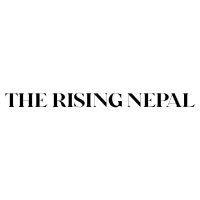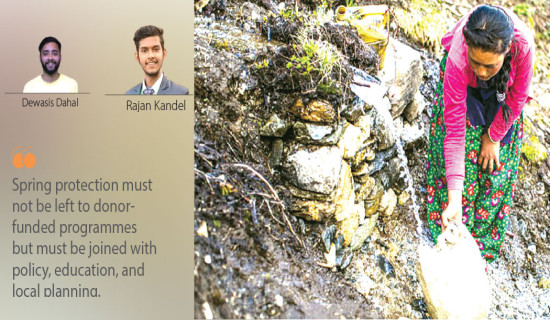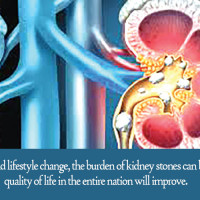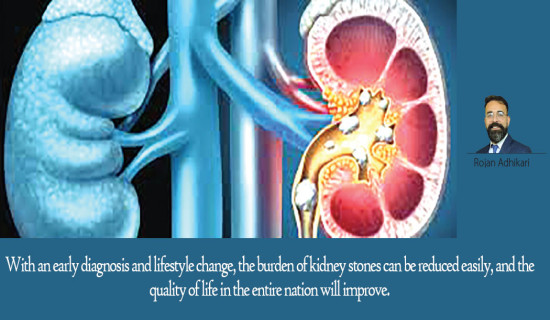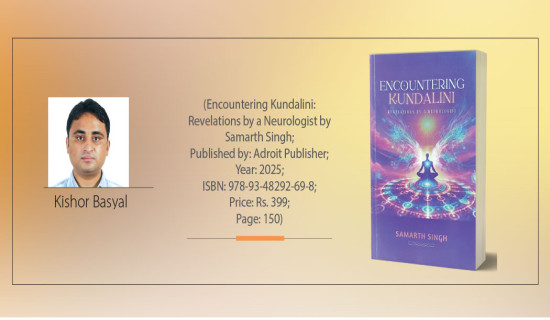- Friday, 29 August 2025
Healing Hearts In Remote Kalikot
As a cardiologist, I have participated in numerous health camps throughout Nepal, most of which were in remote areas. These locations had challenging geography and limited facilities, demanding enormous resilience and determination. Kalikot, a remote district in Karnali Province, was one such destination, nestled in the mid-hills, where the residents endure significant hardships that most of us can hardly imagine. Lack of infrastructure and healthcare services often makes initiatives like health camps vital in such regions. This time, we aimed to conduct cardiac screening for schoolchildren in some of the region's underserved communities. Heart disease, both congenital and acquired, can drastically affect a child's future, yet so many of these children might never get diagnosed or treated unless it gets too late.
Reaching Kalikot was an adventure in itself. We began our trip with a flight from Kathmandu to Surkhet, a new center of mid-western Nepal. Even before reaching Surkhet, unexpected challenges greeted us.
The plane had to fight to land due to flocks of birds on the runway, providing us with suspense and delay. Luckily, we landed safely. That evening, we stayed at a hotel, fully aware that this would be our last touch of comfort for the next few days. The next morning at dawn, we set out for Kalikot by road.
The drive to Kalikot was long and arduous. The narrow roads, precariously carved into the hillsides, were sometimes nerve-wracking. Even experienced drivers faced challenges navigating these paths. I often found myself glancing at our driver's expression for reassurance. While he drove with remarkable care, there were moments when his unease was palpable. Yet, he remained steadfast in keeping us safe, a testament to his dedication and professionalism.
Despite fear, we couldn't resist admiring the rich natural beauty, from lush forests to sweeping vistas over the Karnali River, and capturing the scenic charm that was nothing less than postcards.
We reached Kalikot late that night, extremely fatigued. The hotel rooms were tiny and dim, with hardly any basic facilities, and the food was bland and straightforward. But our purpose of serving outshone the discomfort, and soon it no longer mattered.
Over the next few days, we visited around 3 to 4 schools to examine more than 800 children and perform echocardiography. The hilly terrain with rocky and damaged roads made reaching those schools challenging. Yet, upon arrival, all fatigue melted away in the warmth of our welcome by the school authorities, residents, and children.
Their heartfelt hospitality with armfuls of flower garlands and smiles was genuinely touching. Many children had never seen medical equipment before, their wide eyes filled with amazement as they watched us set up the echo machine and stethoscope.
Their innocence and enthusiasm filled us with renewed energy. While most of them were healthy, a few were diagnosed with congenital heart defects like holes in the heart, and some had rheumatic heart disease.
We advised them to visit Manmohan Cardiothoracic Vascular and Transplant Center (MCVTC) in Kathmandu for further evaluation and treatment. That evening, we wrapped up around 7:30 pm. Darkness had already descended, and the return journey to the hotel was far from easy.
Our vehicle was jolting through the unpaved, bumpy roads made of rocks and stones in the darkness. The only other option to avoid this bone-rattling ride was climbing up the hill on foot in pitch darkness with the unsettling fear of foxes lurking nearby.
Exhausted, we returned to the hotel, took a hasty dinner, and went to bed early, preparing ourselves for another arduous day. The second day witnessed the same scenes of curiosity and hospitality. The result was also identical to the first. Yet one moment remained etched in my memory of an 8-year-old girl whom I gently told that she had a small hole in her heart and would need treatment in Kathmandu. She looked at me and replied quietly, "My father has only enough money to take us as far as Surkhet. We can't afford to go to Kathmandu." Her words cut through me, leaving my eyes brimming with tears. In her innocent voice, I heard both hope and despair.
Beyond medical service, our interactions revealed the harsh realities of their daily life. Many people had not visited the hospital in years due to difficulty accessing it, often delaying medical care until emergencies forced them.
On the third day of our camp, we faced an unforeseen setback. Our team set out early with around 50 kilograms of medical equipment, loaded into two jeeps, aiming to reach a remote village. But the road was blocked by the aftermath of a landslide, with no reconstruction efforts undertaken since the disaster. An abandoned jeep lay stranded for days, making passage impossible. To go ahead, we would have to walk for four to five hours upwards carrying heavy and delicate equipment. We had no choice but to abandon our plan. We felt frustrated and helpless since the people were awaiting our arrival. The episode was a stark reminder of the daily neglect and systemic problems these far-flung villages experience. Navigate these treacherous roads regularly, often carrying supplies and goods on foot to sustain their families. Their resilience inspires admiration, yet a silent plea for structural equity and support lies underneath. Despite the disappointment, we redirected our efforts and reached another school after a short uphill walk. Once again, the children's smiles and curiosity reignited our spirits, and we completed our health camp.
When the camp concluded, my heart was heavy yet full of gratitude. The days in Kalikot were physically exhausting but were emotionally enriching. As a health worker, the responsibility is to treat individual illnesses and advocate for policies and programs that address underlying determinants of health inequities. This experience underlined the interdependence of health, environment, and development. As we returned to Surkhet, the contrast was stark, a reminder of how tough life in Kalikot had been. Adopting a multi-faceted approach, such as infrastructure building, reforesting, and engineering solutions, is imperative to be resilient to environmental adversity. Improved infrastructure ensures safe travel and encourages healthcare workers to serve in remote regions. Empowering local health workers is also vital for enabling them to improve their own surroundings.
Finally, when we came back to Kathmandu, I pondered the experience day and night and realised that the time we spent watching those children was not just a clinical exercise - it was an investment in the future of our nation. If we all work together, we can build a future where all prosper, no matter where they are or what happens to them. Health camps do more than detect disease - they forge bonds, impact lives, and inspire change. And that's where true healing begins.
(The author is an interventional cardiologist at Manmohan Cardiothoracic Vascular and Transplant Centre.)


